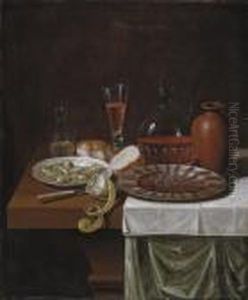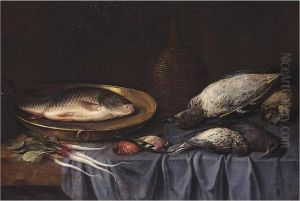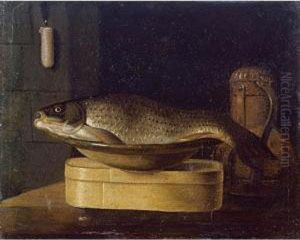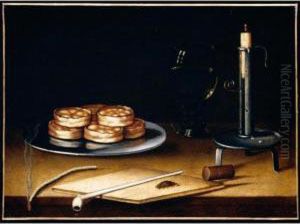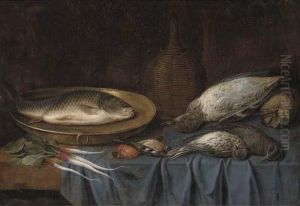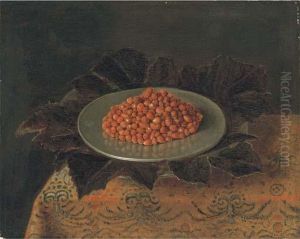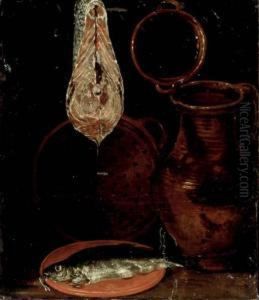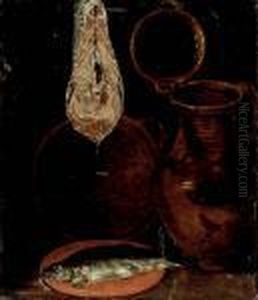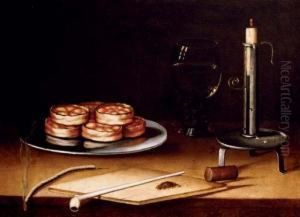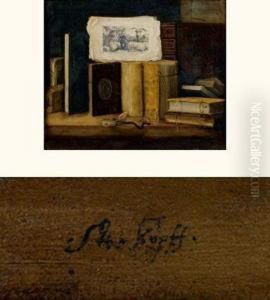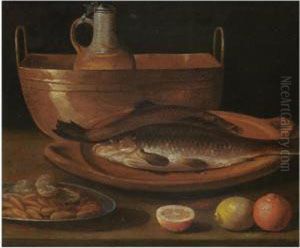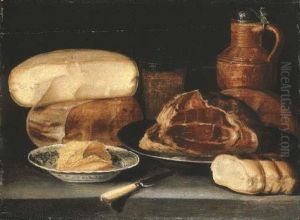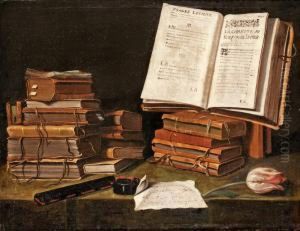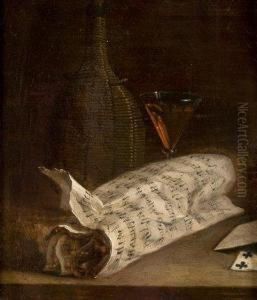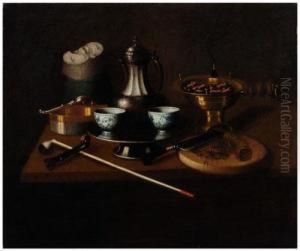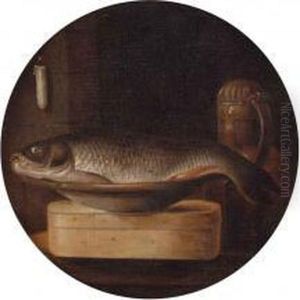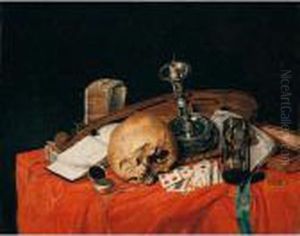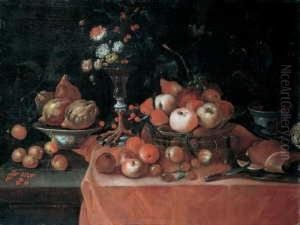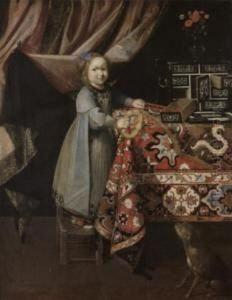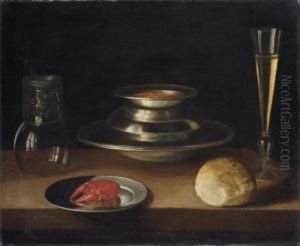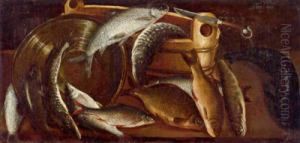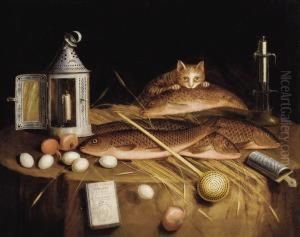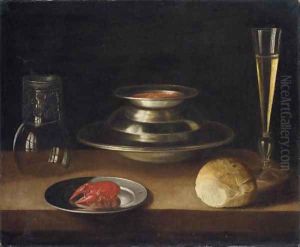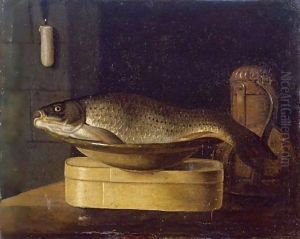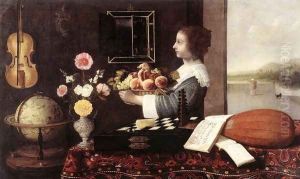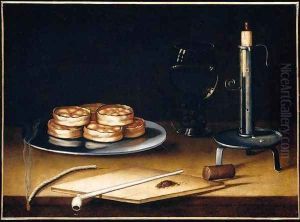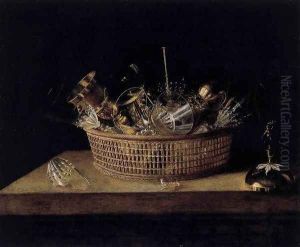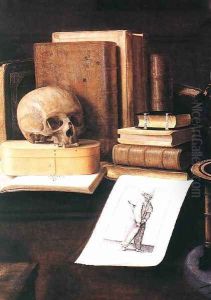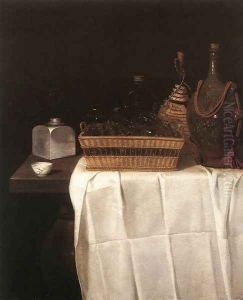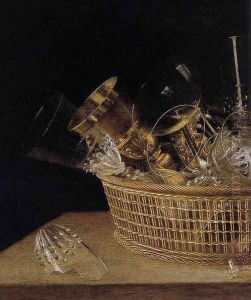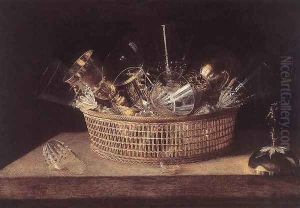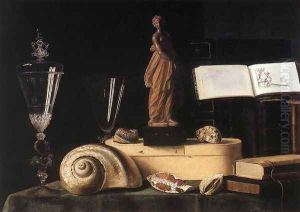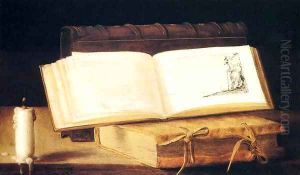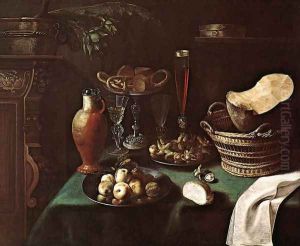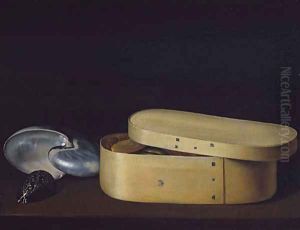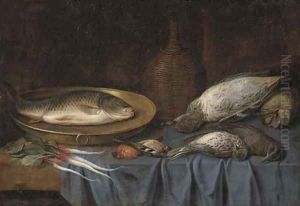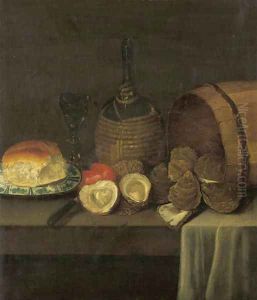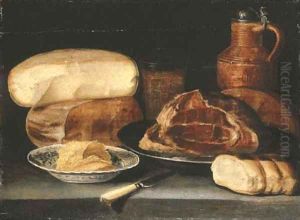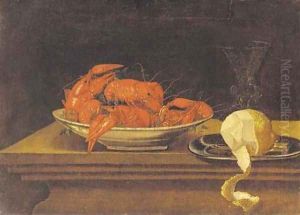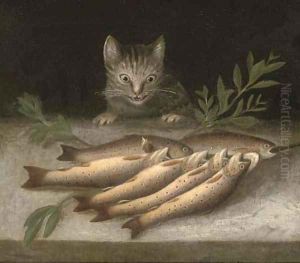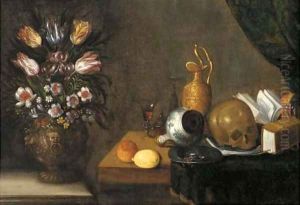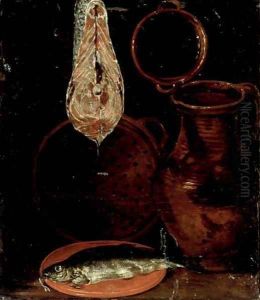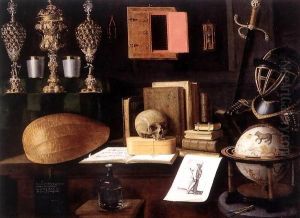Sebastien Stoskopff Paintings
Sebastien Stoskopff was a prominent Alsatian still-life painter during the Baroque era. Born in Strasbourg, Alsace (then part of the Holy Roman Empire) in 1597, Stoskopff is renowned for his detailed and realistic still lifes, which often depicted inanimate objects such as glasses, bottles, and bowls, with an emphasis on texture and light.
Stoskopff's early life is not well-documented, but he is known to have been active as an artist from a young age. He likely received his initial artistic training in his hometown of Strasbourg before moving to Paris. In Paris, he became acquainted with the works of other still-life painters, which influenced his own style significantly.
Around 1621, Stoskopff returned to Strasbourg and continued to develop his craft. He became one of the city's most respected artists. His paintings are characterized by their meticulous detail and the use of light to create a sense of volume and form. Stoskopff's compositions were often sober and reflective of the vanitas theme, a common genre in still-life painting that serves as a reminder of the transience of life.
During his career, Stoskopff enjoyed the patronage of notable figures and institutions. Despite this, he lived a relatively modest life. Little is known about his personal life, and he never married. He spent the last years of his life in the small town of Idstein, where he continued to paint until his death in 1657.
Stoskopff's legacy includes a significant contribution to the development of still-life painting in Europe. His works can be found in various museums and art collections around the world, and they continue to be studied for their technical mastery and beauty.
